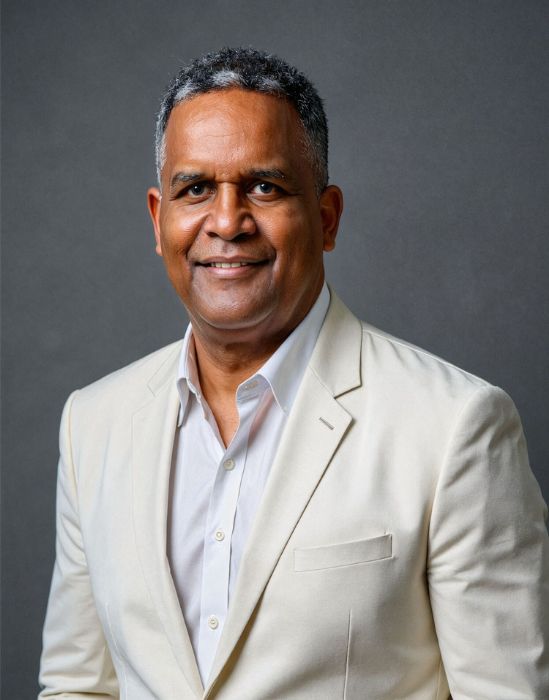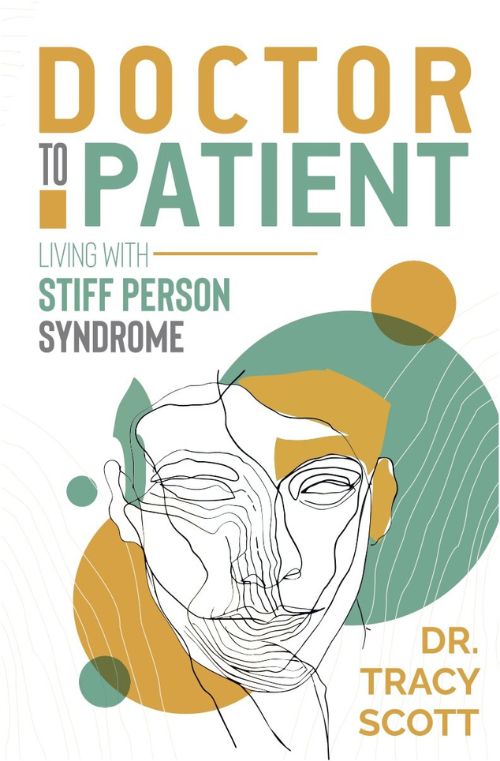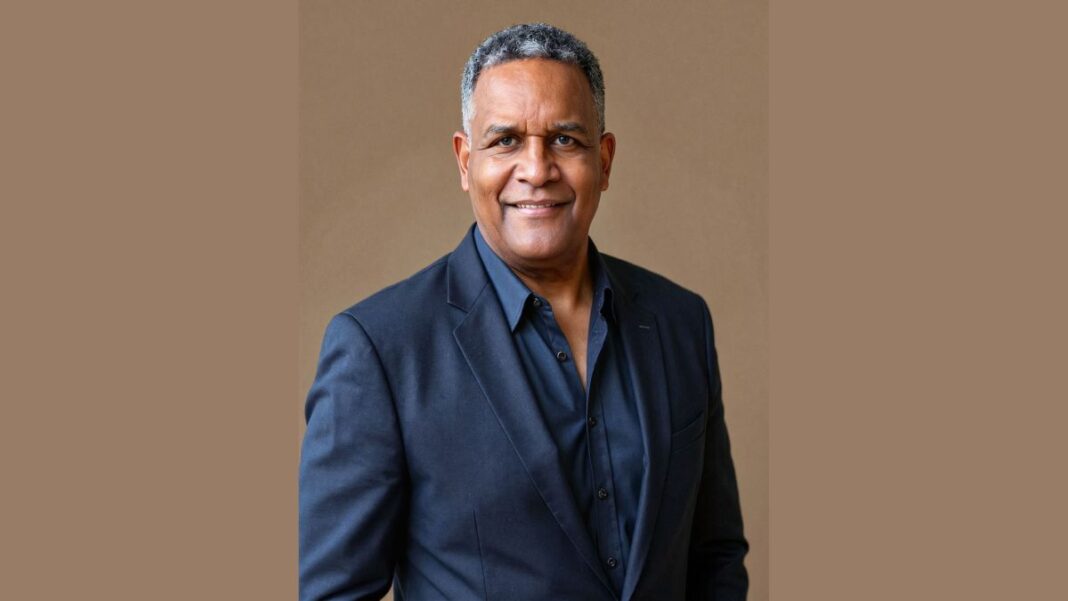Dr. Tracy Scott (Photo Provided).
April is National Minority Health Awareness Month. This story is part of our ongoing coverage highlighting the health challenges—and triumphs—of Black people, especially Black Chicagoans.
Dr. Tracy Scott, a Black man from Chicago’s West Side, is one in a million. That’s not hyperbole. He shares a rare autoimmune disorder with global pop icon Celine Dion—Stiff Person Syndrome (SPS)—a condition that affects roughly one in a million people.

Celine Dion, performing in London on July 5, 2019. Since her diagnosis, she has rescheduled her tour dates. Brian Rasic/WireImage via Getty Images
SPS is marked by painful spasms and severe muscle stiffness. But Dr. Scott is quick to point out the distinction.
“My experience with these spasms,” he says, “is that it’s as if someone takes a vice grip and places it on your leg, and they start turning that grip, and they don’t let go, and they don’t stop.”
“It continues to twist and contort your body until your bones actually break. That’s the difference.”
A Rare Diagnosis with a Familiar Fight
Though SPS is rare, Dr. Scott’s story is not. It mirrors the quiet battles of people living with chronic conditions—cancer, lupus, multiple sclerosis, rheumatoid arthritis, fibromyalgia. That’s why he wrote Doctor to Patient: Living with Stiff Person Syndrome.
The book is a personal testament, but it’s also a guide. It’s about how one can find meaning despite pain, how one’s “why” can eclipse the symptoms.
A West Side Childhood Shapes a Calling
That purpose took root decades ago when Dr. Scott grew up in East Garfield Park during the 1960s and ’70s. At the corner of Jackson and California, he saw what many kids saw—poverty, crime, the slow decay of disinvestment. But places like Marillac House and the Dr. Martin Luther King Jr. Boys Club gave him something else.
“I was exposed to a lot and grew up kind of fast, so to speak,” he said. “But there was always a burning question that I had. I wanted to have a better understanding as to what was producing the behavior I witnessed… not only understand it but also how I could be of assistance.”
How This Field of Study Showed the Way

Psychology became his path forward.
“Psychology, for me, provided that branch of trying to make sense out of something that certainly, for a young person, made no sense,” he said. “It’s not that psychology has or had all of the answers… but living in a West Side community filled with activism and activists and mentors and programs… they were a catalyst for me.”
He earned his doctorate in clinical psychology from Adler University and completed postdoctoral work at Schwab Rehabilitation Hospital. He built a career rooted in healing—speaking, teaching, counseling—on everything from stress and domestic violence to illness and grief.
When the Body Turns Against You
Then, in the early 2000s, his own health began to shift.
It started with spasms. Not just painful—but debilitating. Way worse than charley horses. He saw doctor after doctor, and each time, the results were the same: “pristine” bloodwork with no real answers. Medications dulled the pain but didn’t stop the episodes.
“In addition to the lack of efficacy of the medications, they were also producing unwanted side effects,” he said.
The Long Road to a Diagnosis
In 2015, a change in insurance gave him new doctors—and a new chance at answers. But the interventions made things worse. Finally, one day, a pain specialist asked him a question he hadn’t heard before:
“Have you heard of a disease called stiff person syndrome?”
He hadn’t. But when he returned to his car and looked it up, the truth unraveled like a long-forgotten knot.
“When I saw the onset of the spasms, the presentation of the spasms, the severity… I said, ‘Oh my God. Oh my God. That’s exactly what it is.’”
There is no cure. His doctor told him, bluntly, “I’m not sure what I can do for you. You failed everything.”
“I was faced with a situation of not having any answers and not really having anywhere to turn,” Dr. Scott recalled.
‘What Can I Do Now?’
But he still had the question: What can I do now?
He turned inward and leaned into the spiritual. A whole-food, plant-based diet. Meditation. Movement. Laughter. Gardening. Time with his men’s group. He found relief not just in the body but in the mind and spirit.
“I try to provide support, education and resources to communities around the world that are faced with genocide and other traumatic situations,” Dr. Scott said. “I try to, every day, find someone or some opportunity to help someone or some organization or some group that’s in need.”
Living Deliberately, With Purpose
He lives that mission now from his home in Southwest Florida, where his life is one of careful, deliberate preparation. A wrong stretch, the wrong sound, or even putting on shoes could set off a flare. His family knows not to startle him. He carries an emergency kit and a note explaining his condition. He knows the location of every nearby ER.
A Message to Others Living with a Condition

Dr. Tracy Scott’s new book, “Doctor to Patient Living with Stiff Person Syndrome by Dr. Tracy Scott.”
He’s always ready. But he doesn’t let SPS define him.
“Pain is real, but don’t let it define you,” he said. “Don’t let it be decisive in how you live your life.”
His message to others is simple but hard-earned: your life still has meaning.
“The importance of focusing on purpose over the symptoms, the importance of spending more time in not allowing the trauma of what you’re experiencing being greater than your agency, that your life has meaning,” Dr. Scott said.
“I would say that my purpose is about understanding and finding ways in which I can transform human life.”
You can follow Dr. Tracy Scott on Facebook and Instagram to learn more about his journey, his advocacy, and his book Doctor to Patient: Living with Stiff Person Syndrome.
For more information on stiff person syndrome (SPS), visit this link.

